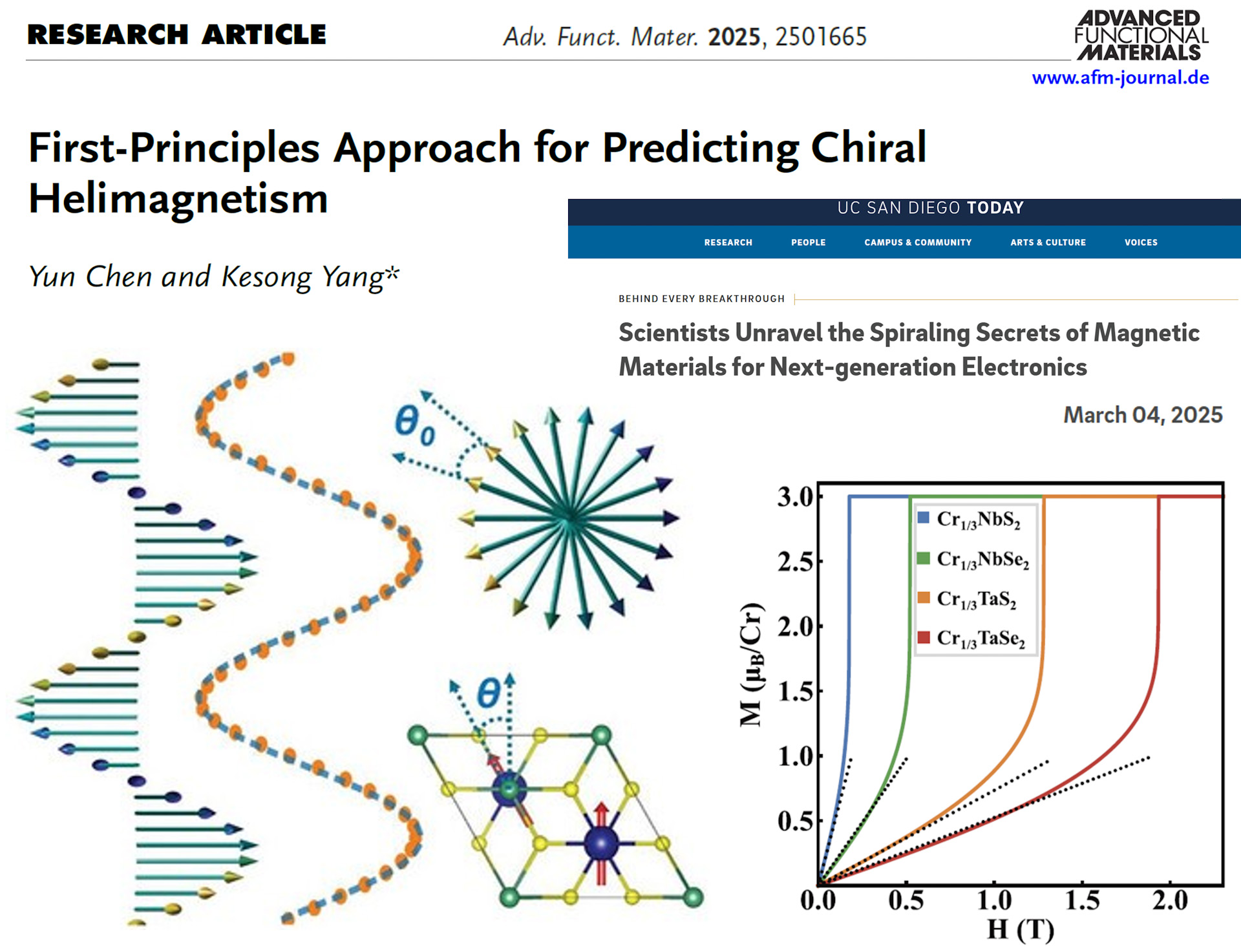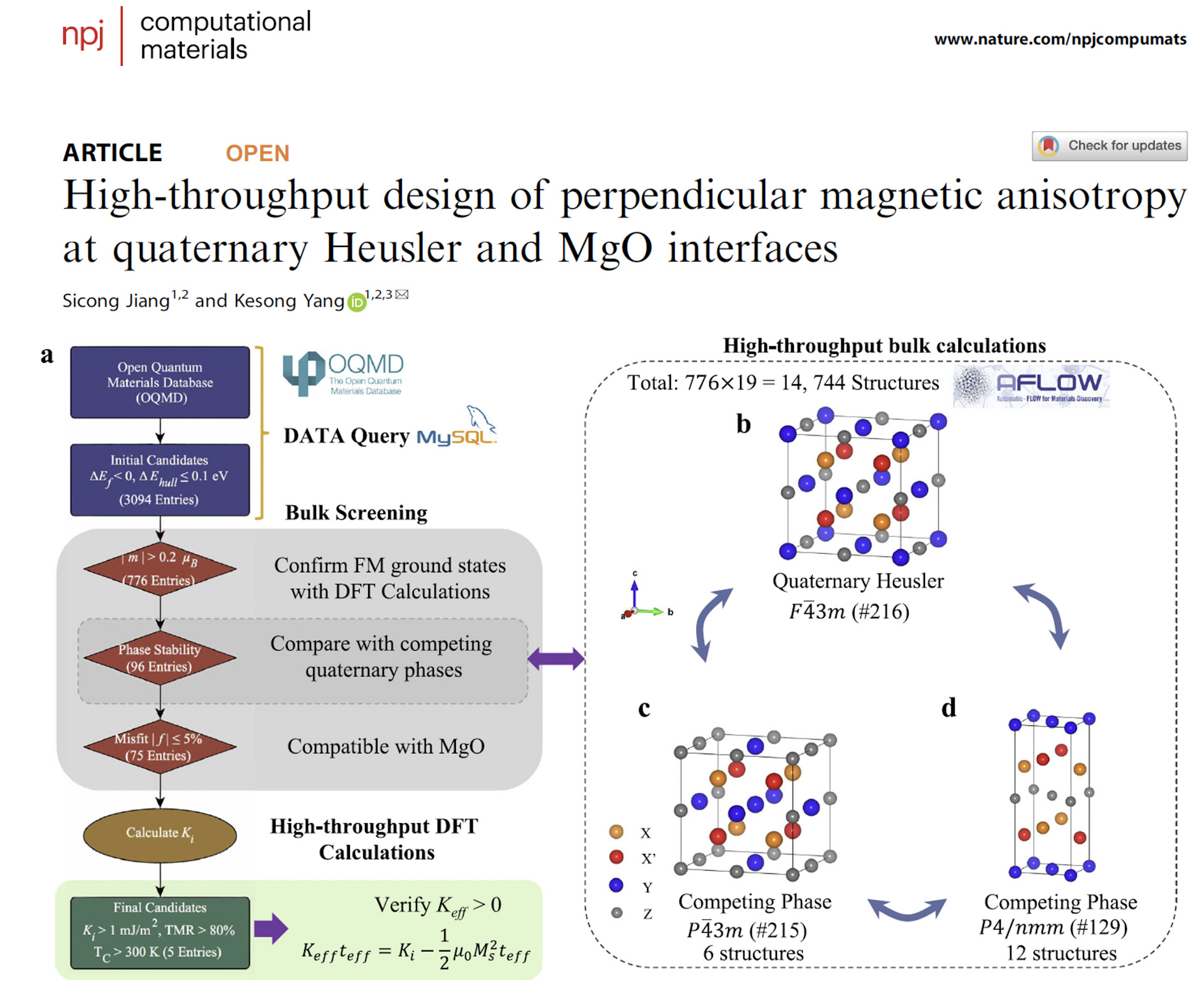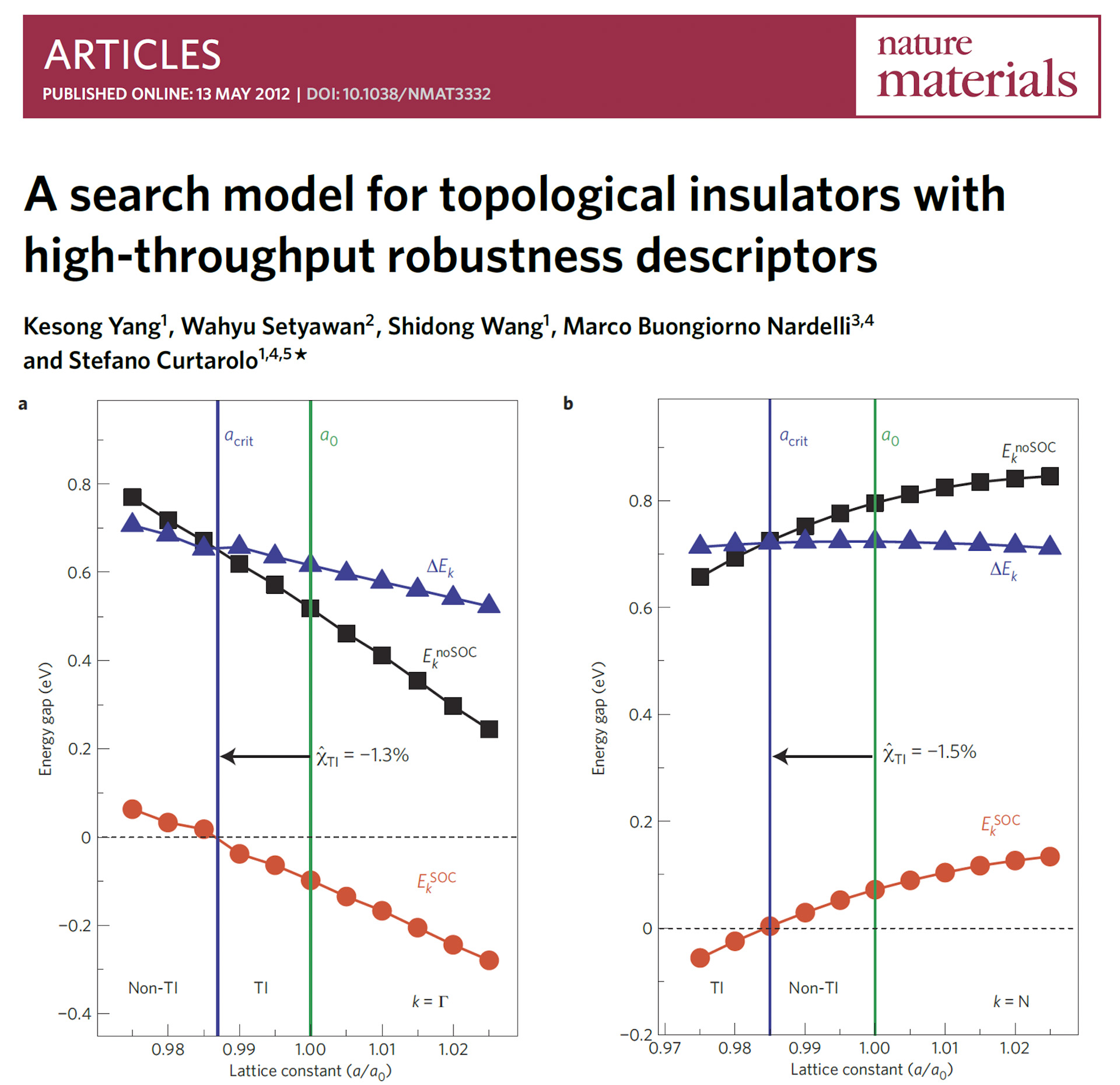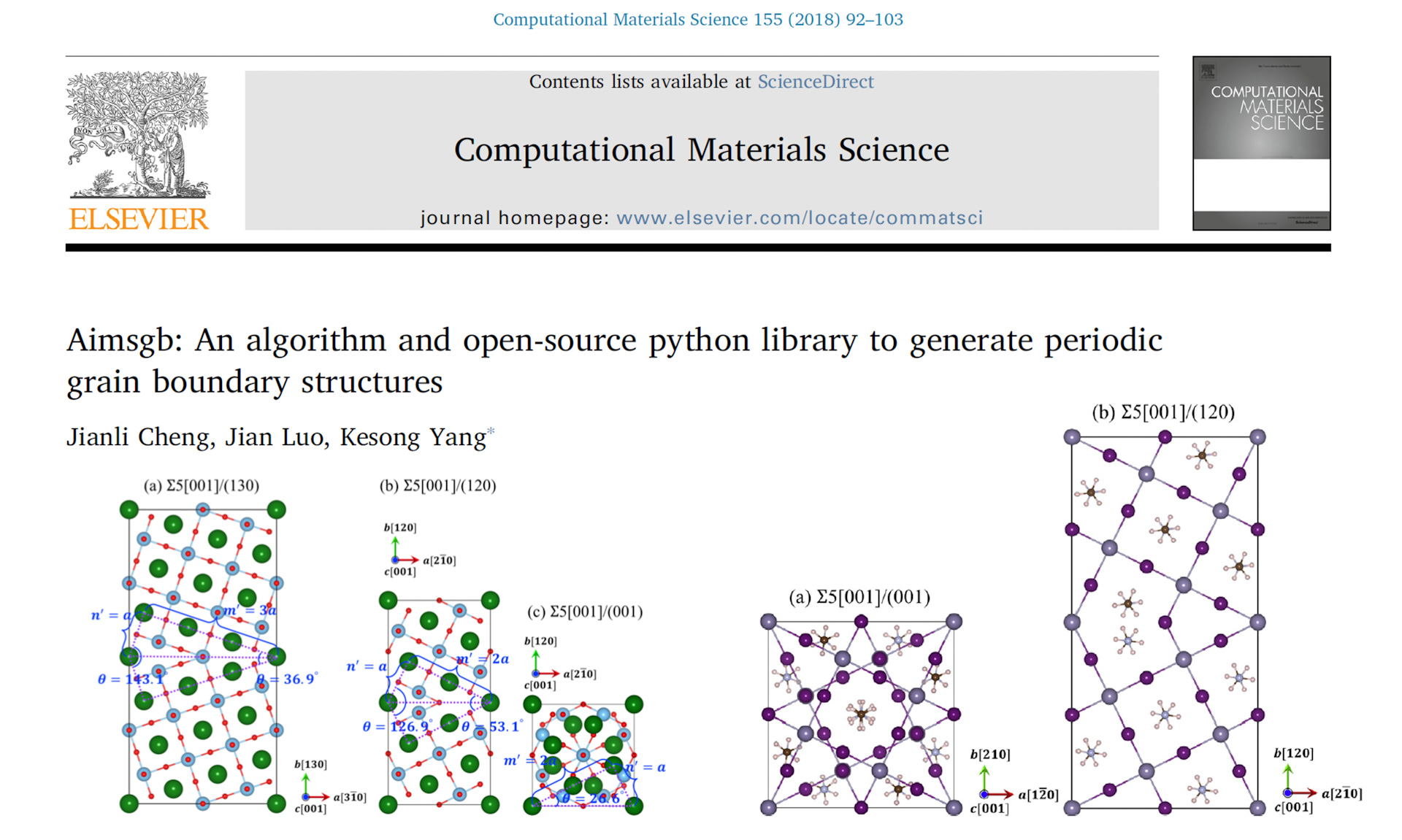Research
Overview
We are broadly interested in the computational studies of composition-structure-property relationships of advanced nanomaterials for nanoelectronics, optoelectronic, and spintronic applications as well as related energy storage and conversion applications.
We use the modern modeling approaches and innovative methods, including first-principles density functional theory calculations and high-throughput computational and data-mining techniques, to search for the target functional materials with desired materials properties and to reveal underlying materials design principles.
Elucidate Composition-Structure-Property Relationships of Functional Materials
We are interested in studying structural, electronic, optical and magnetic properties of materials from first-principles electronic structure calculations. Starting by understanding/manipulating materials properties through computer simulations, our primary aim is to help design novel functional materials with various applications from production, storage and conversion of energy to electronic information technology. We would like to collaborate with experimentalists and work together to explore unknown phenomena in every aspect of materials research, particularly in the fields of energy materials and spintronics.

For instance, in this research article, we have developed a universal method for precisely modeling and predicting helimagnetic properties using first-principles calculations. By applying this approach, we successfully predicted the critical parameters of helimagnets, paving the way for the discovery of novel helimagnetic materials.

High-throughput (HT) Computational Materials Design
HT computational materials design provides us a way to realize a rapid discovery of novel functional materials. With the development of computer hardware and availability of high-performance software for first-principles electronic structure calculations, it is becoming practical to produce a huge quantum materials repository. The key idea behind the HT computational materials design is to find a reliable and accessible descriptor, which can help us identify the candidates of desired materials.






Developing HT Computational and Data-analysis Infrastructures
To search for materials with desired properties using HT method, besides automatic electronic structure calculations for hundreds of thousands of compounds, a systemic characterization of basic material properties is necessary. In this research article, we present an efficient algorithm for constructing periodic grain boundary models tailored for both ab-initio and classical atomistic simulations in materials science. The algorithm is implemented in an open-source Python library designed to universally generate tilt and twist grain boundaries from input crystal structures.


